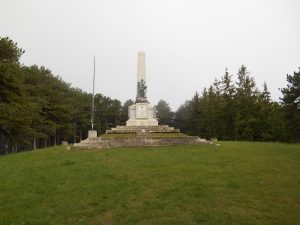This website uses cookies so that we can provide you with the best user experience possible. Cookie information is stored in your browser and performs functions such as recognising you when you return to our website and helping our team to understand which sections of the website you find most interesting and useful. More information in our Privacy Policy
INNOVACONCRETE
Innovative materials and techniques for the conservation of 20th century concrete-based cultural heritage
Principal Investigator: Sabrina Gualtieri
Involved personnel: Michele Macchiarola, Mauro Mazzocchi
Starting date: 01/01/2018
Duration: 36 months
Total funding: 6,894,912.50 €
Call: NMBP-35-2017 n.760858
Action: RIA – Research and Innovation
Project Coordinator: María J. Mosquera (University of Cadiz, UCA)
Consortium: 29 partners from 11 Countries (Eu and no-Eu)
Official website: www.innovaconcrete.eu
Partners: Academia (University of Cadiz; Technical University of Crete; Johannes Gutenberg-Universitat Mainz; Technische Universitat Darmstadt; National Technical University Athens; Techinsche Universiteit Delft; Uniwersyet Lodzki) Research Centres (National Research Council of Italy; Centre for Colloid and Surface Science; Fundación Tecnalia; Studie Centrum voor Kernenergie; Instituto de Ciencias de la Costruccion Eduardo Torroja; MIRTEC S.A.); end users (Wroclawskie Przedsiebiorstwo Hala Ludowa Spolka z ograniczona odpowiedzialnoscia; Fundación Eduardo Chillida Foundation-Pilar Belzunce; MiBACT-Soprintendenza archeologia belle arti e paesaggio dell’Abruzzo; ICOMOS-International Scientific Committee of 20th Heritage (ICOMOS); Fundación DOCOMOMO Ibérico (DOCOMOMO); SMEs (INES Ingenieros; Estudio Guadiana SLP; NANOPHOS S.A.; NanotecMARIN GmbH; IONFLY Vacuum and Plasma Tech SRL; SIKA S.A.; RINA Consulting; TECHEDGE Group; beWarrant; Wiss, Janney, Elstner Associates INC; SIPEC restauraciones)
InnovaConcrete is an innovative project aimed at preserving concrete-based monuments, the most significant Cultural Heritage (CH) in the 20th Century. The selection includes monuments such as the Centennial Hall (in the UNESCO world Heritage list), the Chillida Sculptures (Spain) and the Flaminio Stadium by Nervi (Rome). In addition, other buildings and sites that are hardly recognized by citizens as Cultural Heritage, such as Concrete Shell Structures, an important achievement of the post- war modernist movement, and War Memorial Towers, symbols of the collective identity of European citizens, Kaunas Fort, one of the first concrete buildings of the 20th C, have also been selected. Finally, the Torroja Building has been chosen as a representative model of interdisciplinary collaboration between architecture and engineering during the 20th Century.
A completely innovative approach based on producing C-S-H gel, responsible for the engineering properties of cement paste in cracks of decayed concrete monument, in situ, will be developed. Complementary, these innovative solutions can be functionalized with super-hydrophobicity and corrosion inhibition properties. In addition, InnovaConcrete will explore other approaches: enzyme- assisted self-healing of damaged surfaces, inorganic nanotubes and atmospheric plasma device for product application.
The optimization of the solutions proposed will be carried out by the use of theoretical tools (multi-scale modelling approaches) together with experimental tools (laboratory and in situ validation). Technical interventions will be combined with activities to promote and achieve social awareness and value creation linked to monuments and buildings.
Expected impacts
Technical:
• Development of Innovative and affordable products/techniques;
• Development of modelling-based decision-making tool;
• Effective market uptake;
• Tailored concrete restoration & preservation;
Social:
• Citizens awareness of 20th Century Cultural Heritage;
• Tool for evaluating socio-economic prospects;
• Open repository of project outcomes;
• Environmentally friendly solutions;
The Ambitions
• To develop advanced materials and techniques specifically designed for concrete heritage preservation;
• To serve as watchdogs of concrete heritage and to open social-economic activities around “historic concrete;
• Effective market uptake of technical solutions developed in InnovaConcrete

